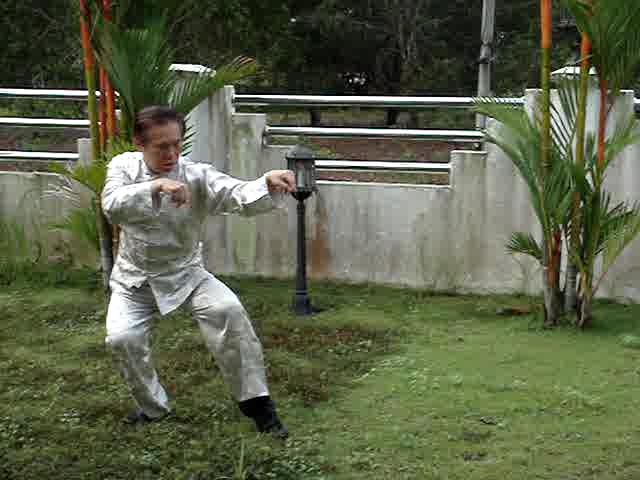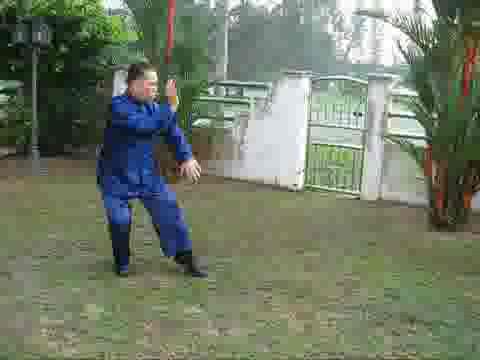KUNGFU SETS WITH ZEN ASPECT

Eighteen-Collection of Praying Mantis
Question 4
We in Shaolin Wahnam are lucky and have the possibility to learn different sets from competent masters. Which set from KungFu/Taijiquan represents the highest Zen aspect and what's the reason?
I myself presume it's Praying Mantis because the set goes in one direction and back and includes the Zen aspects simple, direct and effective.
Roger
Answer
We are indeed very lucky. Our opportunity to learn a great range of kungfu sets as well as internal force training methods and chi kung exercises is unprecedented in kungfu history. In other words, never before had any kungfu or chi kung practitioners in the whole history of kungfu and chi kung the same opportunity as we in learning kungfu sets, force training methods and chi kung exercises.
Our repertoire of kungfu sets ranges from Tiger-Crane of Shaolin to Wudang Taijiquan and Swimming Dragon of Baguazhang. Our force training methods range from Siu Lin Tou of Wing Choon to Cloud Hands of Taijiquan to Baguazhang stance training. Our chi kung exercises range from Eighteen Lohan Hands to Cosmic Shower to Small Universe.
The choice of the kungfu set that represents the highest Zen aspect depends on what we interpret the Zen aspect to be.
If we interpret the Zen aspect as being simple, direct and effective, I would choose “Cross-Roads at Four Gates” to be the most representative set. It was the fundamental set practiced at the south Shaolin Monastery at Quanzhou. It was the set that our Patriarch, the Venerable Jiang Nan, brought out from the Shaolin Monastery and passed on to us.
If we interpret the Zen aspect as the highest chance to attain a satori or spiritual awakening, I would choose the Wudang Taijiquan Set. It represents the highest point in the development of Shaolin Kungfu where kungfu, chi kung and meditation were integrated into one set. At the time the great Zhang San Feng practiced it, it was called Wudang Shaolin Kungfu.
If we interpret the Zen aspect as meditation, I would choose the 108-Pattern Yang Style Taijiquan Set. The whole set is performed like a long continuous flowing meditation without beginning and without end.
Praying Mantis Kungfu has numerous sets, and all of them are quite complex and sophisticated. They are neither simple nor direct, though they are very effective.
Going in one direction and back does not represent the Zen aspect. Most kungfu sets of Northern Shaolin styles have this characteristic. Some examples are Eighteen-Collection of Praying Mantis, 50 Sequences of Eagle Claw, 12 Sequences of Tan Tui, and Five-Element Set of Xingyi Kungfu.

Wudang Taijiquan of Zhang San Feng
The above is reproduced from the thread 10 Questions to the Grandmaster about Zen in the Shaolin Wahnam Discussion Forum
LINKS
